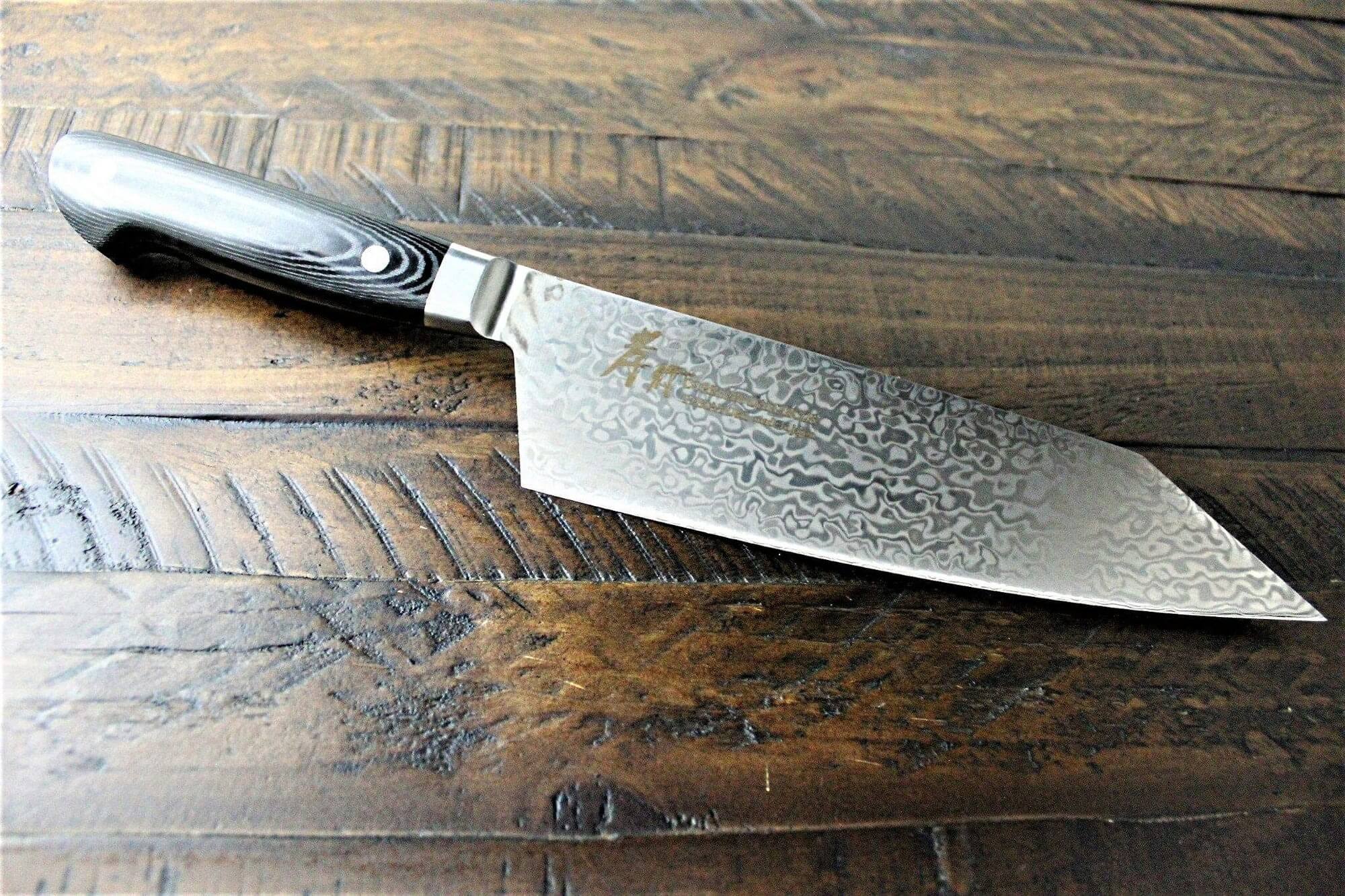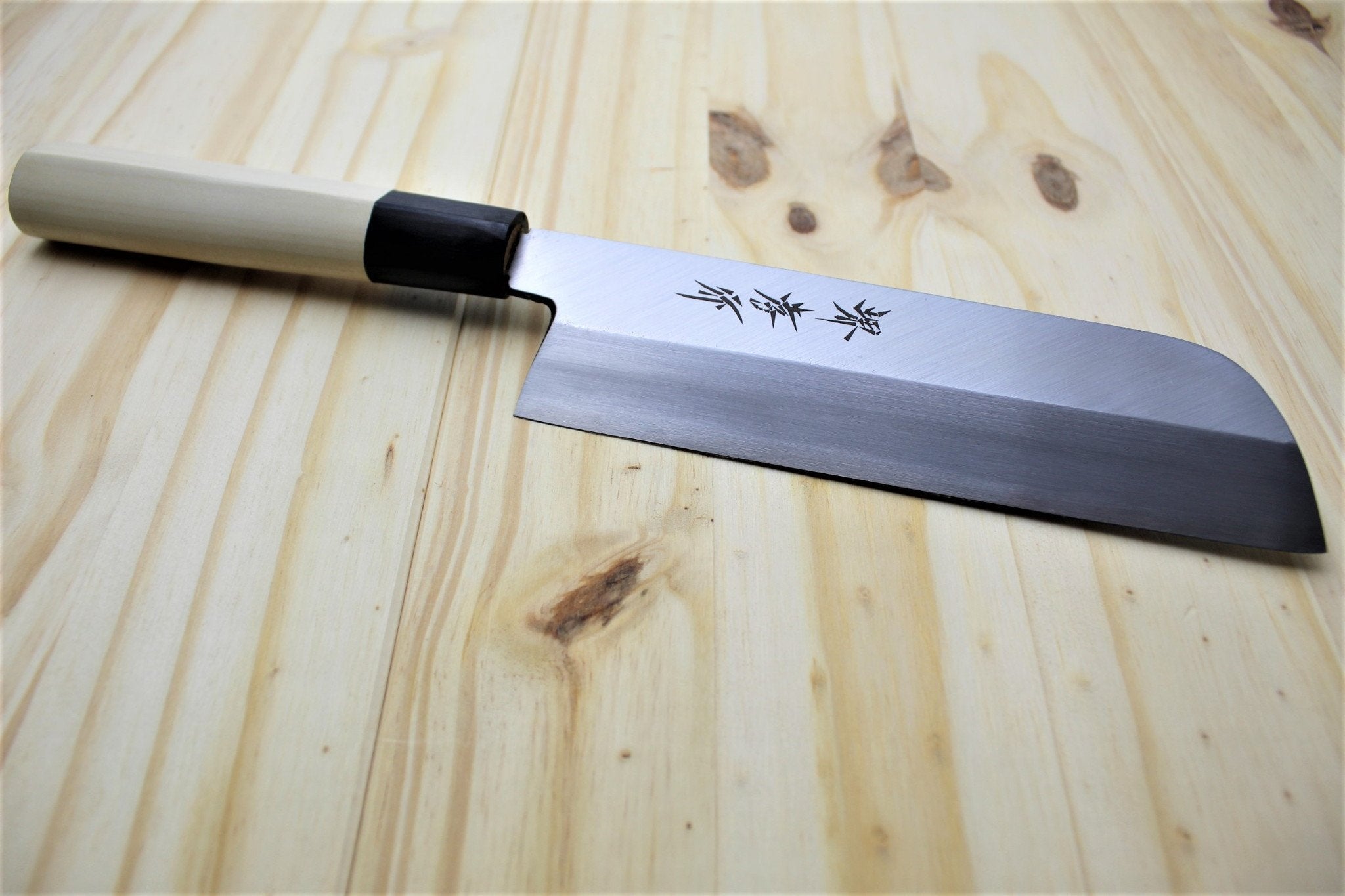
Gyuto Or Santoku Knife: Which is Right for Me?
If you have just started down the path of finding a new, high-quality kitchen knife, we would like to introduce you to the niche of Japanese Kitchen knives. From ancient Japan to current-day Japan, knife and sword-making are held in high regard and honor.
The attention to detail and high standards of workmanship put into crafting Japanese knives are evident even in the more mundane tasks found in your kitchen.
Companies like Hasu-Seizo bring these handcrafted Japanese blades to everyone for use in their kitchen. If you don't already have your Japanese kitchen knives, then the odds are good that you're entering unfamiliar territory. Choosing between a Gyuto or Santoku knife might feel overwhelming at first, especially if you’re just beginning to explore Japanese kitchen knives.
Let's break down and explore two of the most popular Japanese kitchen blades, the Gyuto and Santoku knives. Today, we want to highlight two of the most common Japanese kitchen knives while exploring their similarities, advantages, and core differences.
Understanding the Gyuto and Santoku Knife
Both the Gyuto and Santoku are fundamental in many kitchens, yet they serve slightly different purposes. Gyuto knives are often regarded as the Japanese equivalent of the Western chef's knife. Meanwhile, Santoku knives are more suitable for all-purpose slicing and dicing. Getting to know their characteristics can help you determine which one best matches your cooking habits.
What is a Santoku Knife?
The Santoku knife is known as a large, all-purpose blade. The Santoku knife, which translates to 'Three Uses', is a relatively common and popular knife throughout kitchens in Japan. Typically shorter than the traditional chef's knife, usually around 180mm, these knives feature broad and relatively blunt blades with a wide setting.
The Santoku blades were initially brought forth by Japanese craftsmen in the mid-20th century, following World War II. With a blend of Western design and Japanese influence, it wasn't surprising to see the popularity of the knife grow.
The Santoku knife does not feature a pronounced curve to the blade itself, so it's not the ideal knife for rocking and cutting motions. Despite this fact, the Santoku knife is ideal for long, even strokes, often benefiting from its wide blade for transferring food.
As you look into Japanese kitchen knives, you might come across the name Bunka. It’s very similar to a Santoku, and some knife makers offer both, with slight differences in the edge shape.
In the U.S., Bunka usually refers to a Kengata Santoku. This is just a Santoku with a downturned, sword-like tip. This tip helps with more detailed slicing, and let’s be honest, it looks pretty cool too.
Ideally, individuals will use their Santoku knife for slicing, chopping, and dicing food products. Most Santoku knives are crafted from high-quality steel, such as the 180 mm Damascus 33 Layer Santoku Knife by Hasu-Seizo.
Key Traits and Benefits of a Santoku Knife
- Blade length is typically between 160mm and 180mm
- The edge profile is a minimal curve
- Ideal for Slicing, Chopping, and Dicing
- Crafted from High-Quality Stainless Steel or Carbon Blue Steel
As Santoku knives continue to thrive in both Western and Eastern markets, knife manufacturers are introducing an increasing number of options to the market. Key considerations when shopping should include material quality, blade length, handle style, and blade width.

What is a Gyuto Knife?
The Japanese Gyuto knife refers simply to a traditional Japanese chef's knife. The term 'Gyuto' itself translates to Cow Sword’, which should bring to mind the intention of this utility. Gyuto knives are commonly found in traditional Japanese kitchens as well as in high-end restaurants that serve Western cuisine. Originating out of the 19th century during the Meiji period, these blades were quickly adopted for use by admirers in the West.
The Gyuto knife is traditionally made from Yasugi (High-Carbon) or stainless steel, the same material used to craft Japanese swords. Tough, resilient, and incredibly durable, the finest Japanese Gyuto Knives can be passed down from one generation to the next.
Shaped similarly to traditional Western chefs' knives, the Gyuto knife is traditionally thinner with a double-bevel edge. Additionally, the Gyuto spine curves down toward the edge more at the tip than a traditional European chef’s knife, creating an edge with a less curved profile than the European chef’s knife.
Key Traits and Benefits of a Gyuto Knife
- Blade length starting at 180mm ranging up to 240mm
- The edge profile includes a curve
- Ideal for chopping, including rock-chopping, and push-cutting/pull-cutting
- Crafted from high-quality stainless steel or high-carbon blue steel

Santoku vs Gyuto: Which Knife Is Right for Me?
Understanding the key traits that define both the Gyuto Knife and the Santoku Knife can help clarify your shopping requirements.
However, how do we know which blade to bring home to your kitchen? The truth is that the best home kitchen environments will likely carry both blades, as while they have significant overlap, they also have enough differences to make each useful.
Key Differences Between Santoku and Gyuto Knives
- Size: Santoku knives generally only go up to 180mm, whereas Gyuto knives start at 180mm and go up to 270mm
-
Edge profile: While the Santoku has more of a flat profile, the Gyuto has a curved edge profile. This makes it more suited for rock-chopping
Similarities Between Santoku and Gyuto Knives
- Ideal for chopping and push-cutting and pull-cutting
- Versatile multi-use kitchen knives
- Crafted from high-quality stainless steel or high-carbon blue steel
No matter the blade chosen for your needs, consider learning the proper sharpening and maintenance practices to get the most utility out of your purchase.
Outfit Your Kitchen With Hasu-Seizo
The team at Hasu-Seizo is dedicated to providing its customers with access to the finest-quality authentic handcrafted knives in the greater Seattle region. A family-owned and operated business, Hasu-Seizo has family ties to the Sakai Takayuki manufacturing brand, located in Osaka, Japan.
With reverence for the art of Japanese knife-making, as well as a commitment to absolute quality and customer satisfaction, Hasu-Seizo has been excited to build a catalog of kitchen-defining utilities that clients around the world can enjoy from the comfort of their homes. Every year, our team at Hasu-Seizo visits Osaka to touch base with their blacksmiths and bring back new innovations to their catalog.
A knife is more than just another tool in your kitchen; it is an extension of your life. Explore our collection to find the Gyuto or Santoku knife that suits your style, space, and standards.
Start shopping at Hasu-Seizo today for access to the finest handcrafted Japanese knives.




